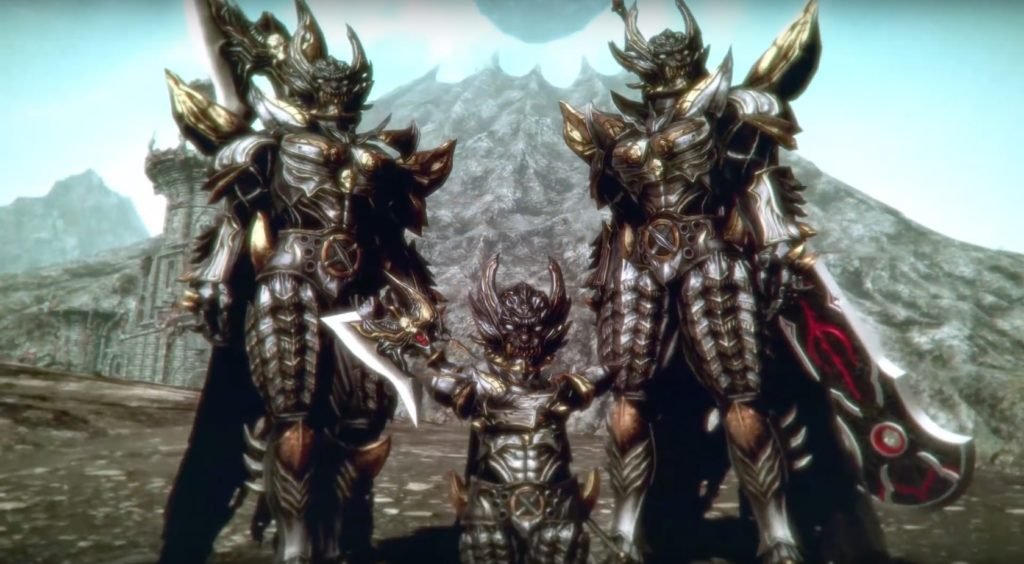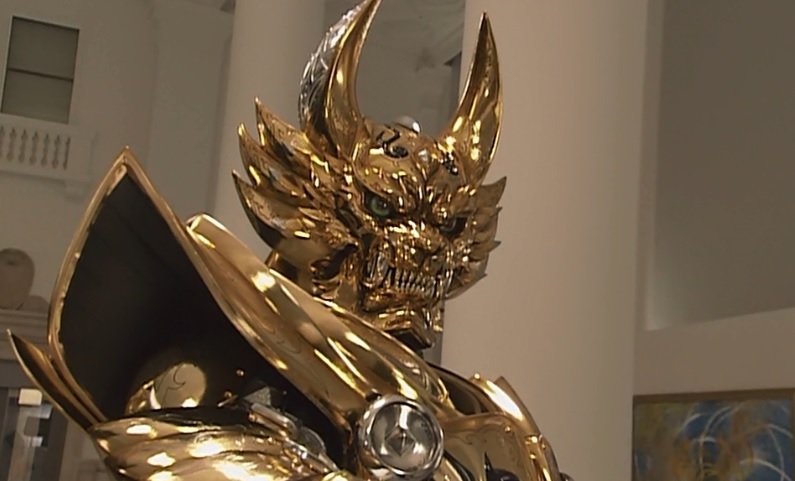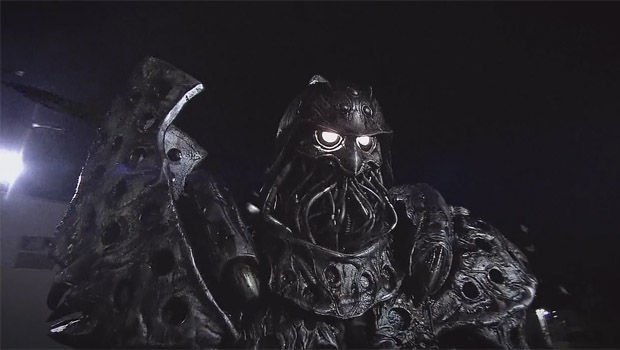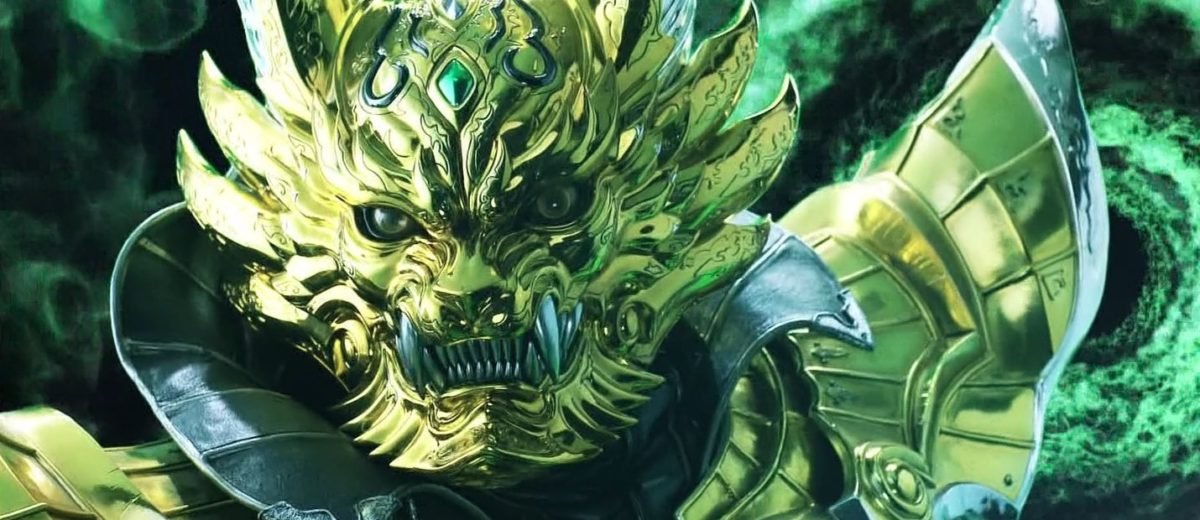Though Square Enix has quite a bit planned for Final Fantasy XIV in the coming year, not least of which is the Stormblood expansion releasing this summer, players can look forward to a new collaboration event this month. Not unlike last year’s Yo-kai Watch event, GARO x FFXIV will introduce a whole host of new loot, including various weapons, armors, outfits, and mounts. If you find yourself confused, wondering why Final Fantasy XIV is introducing armor that looks like something out of Power Rangers, and from a franchise you’ve never heard of no less, don’t worry. You’re likely not alone. Despite its relative success, GARO has very little presence outside of Japan.
For those who don’t know, GARO is primarily a “tokusatsu” show, which is any Japanese live-action television program or movie that features people in spandex or rubber monster suits. Unlike what you might expect however, the series of GARO television shows and movies all have a more mature focus. They revolve around the titular Garo, a mystical Makai Knight who protects humans from soul-eating demons called Horrors. Garo is a member of a secret organization that is responsible for the training and deployment of Makai Knights and their supplemental spellcaster counterparts, the Makai Priests. The organization regards Garo as the most powerful Makai Knight alive and usually gives him the most dangerous assignments. Four Makai Knights and two Makai Priests (or at least their armor) will be featured in the collaboration event: the Makai Knights Garo, Zero, Dan, and Kiba, and the Makai Priests Reo Fudo and Rekka.
Starting January 17th, Final Fantasy XIV players can collect each Knight’s iconic weapon, armor, and mount (i.e., Madou Horse), with the exception of Dan’s horse, as well as outfits and weapons inspired by the Makai Priests. These will be available as Gold Saucer prizes, PvP rewards, and achievements.
In terms of the event’s role in the MMO, it’s a solid first step towards potentially reinvigorating PvP in Final Fantasy XIV. PvP is a point of contention within the FFXIV community. Many players believe that the rewards are not worth the effort, and others claim they wait for over an hour for PvP matches that never start. While gamers will be able to collect most of the event items without participating in PvP matches, special dyable versions of armor and outfits are purported to be available only as PvP rewards. Players who are interested in obtaining these PvP-only items are more likely to participate in PvP matches. Therefore, Square Enix is killing two birds with one stone by providing players with worthwhile PvP rewards, while hopefully attracting enough players to shorten PvP queue wait times.

Though GARO may have branched off into video games and anime in the past, the question still remains: why is GARO, a franchise that has almost never been seen outside of Japan, being featured in a critically acclaimed, internationally released MMO? The reason is two-fold: because of the upcoming January 23rd release of the GARO spin-off series Zero: Dragon Blood and because Keita Amemiya, the man who created the GARO franchise, is designing the bosses in FFXIV’s upcoming Return to Ivalice raids. Square Enix has provided almost no information about the raids, but longtime fans will recognize Ivalice as the setting for the various Final Fantasy Tactics games, as well as Vagrant Story and Final Fantasy XII.
Aside from a limited anime series, GARO has received little to no attention in the West. Funimation may have licensed all three anime seasons (all of which can be watched for free on the Funimation website), and sites such as Amazon and BigBadToyStore sell GARO merchandise, but the live-action show and movies that kicked off the franchise have been left by the wayside. The first season of the show aired back in 2005, but Section23 Films (a relatively new multimedia distributor that has released several classic Godzilla films on DVD and Blu-ray) was not able to license the original tokusatsu series until 2016.

So what makes GARO worthy of your attention? For starters, GARO is an action-packed series about knights slaughtering evil demons by the country-full. GARO uses its tokusatsu nature to the fullest and gives audiences wonderfully choreographed fights. The show is at its best when two or more actors in rubber suits fly across a room on invisible wires and clash with foam swords. Furthermore, most of the action in GARO uses practical effects, and CG is usually limited to scenes where Garo or another Makai Knight has to defy the laws of physics.
Additionally, the fight scenes are shot so the audience can easily keep track of the action and know which character is which. Even when Garo is plowing through fifteen million enemies Dynasty Warriors style, viewers don’t have to play a game of “Where’s Garo” thanks to his bright gold armor, spiky wolf helmet, and green flames. If Garo were less identifiable, the set lighting were slightly darker, or the camerawork were less steady, audiences would spend more time trying to figure out what is going on and less time enjoying the spectacle.
The characters and themes of GARO also help make the show memorable. Case in point, the main character Garo isn’t one single character, but instead a title shared by several people throughout the series. No less than five men have adopted, inherited, or earned the title and armor of Garo. Each of these characters has his own personality quirks and flaws, but they all share two traits in common: an unwavering sense of duty that prevents them from being corrupted and the will to put their lives on the line to protect any and all humans from Horrors. However, the show makes at least one member of the Makai organization become corrupt per season. Sometimes this person is a single Makai Priest who willingly turns on his fellow priests and knights, and sometimes he is a Makai Knight who falls in battle and is consumed by a Horror. Regardless of the whys and hows, the audience is always reminded that nobody is beyond corruption.

Finally, the GARO franchise is enhanced by numerous little touches of “show, don’t tell,” i.e., storytelling through actions and symbols rather than exposition. For example, the Makai Knights’ weapons are made out of “Soul Metal,” a material that responds to the will of the user. The audience immediately knows that if a Makai Knight struggles to lift his weapon, he is beginning to doubt himself. The timer shown in the opening of the GARO x FFXIV Collaboration trailer above is also an example of how the show uses “show, don’t tell” to great effect. This timer appears whenever any Makai Knight dons his armor, especially in the first season of the show when the audience is still learning about the knights. No explanation is given why the timer exists, and viewers are left wondering what happens after it reaches zero. Does the transformation automatically end? Does the armor kill its wearer? The audience asks these questions whenever the timer appears, and the answer comes as a genuine surprise when it is finally revealed.
GARO is a tragically underrated show outside of Japan. However, the stars appear to be properly aligned for the series to receive the attention it deserves. The live-action shows have finally been licensed for widespread distribution to Western audiences; the Power Rangers movie is poised to bring tokusatsu back into the public eye, and Final Fantasy XIV is giving gamers the opportunity to dress up as various GARO characters, potentially encouraging them to learn more about the GARO franchise. And on top of that, who doesn’t love Knights that can topple Godzilla-sized monsters using swords large enough for a horse to surf on?
The event kicks off January 17th, while the Return to Ivalice raid, and the Keita Amemiya-designed bosses in it, arrive later this year as part of the Final Fantasy XIV: Stormblood expansion.


